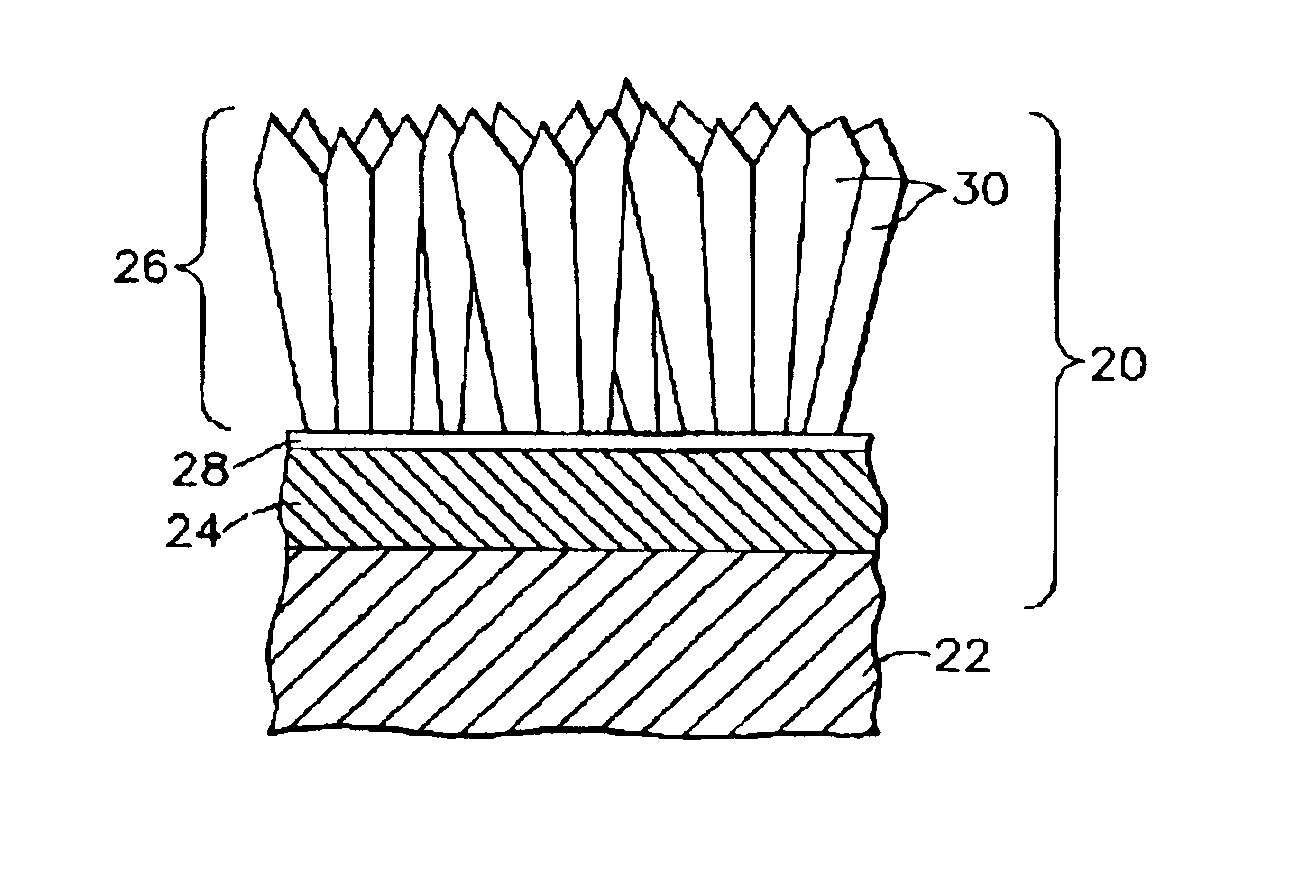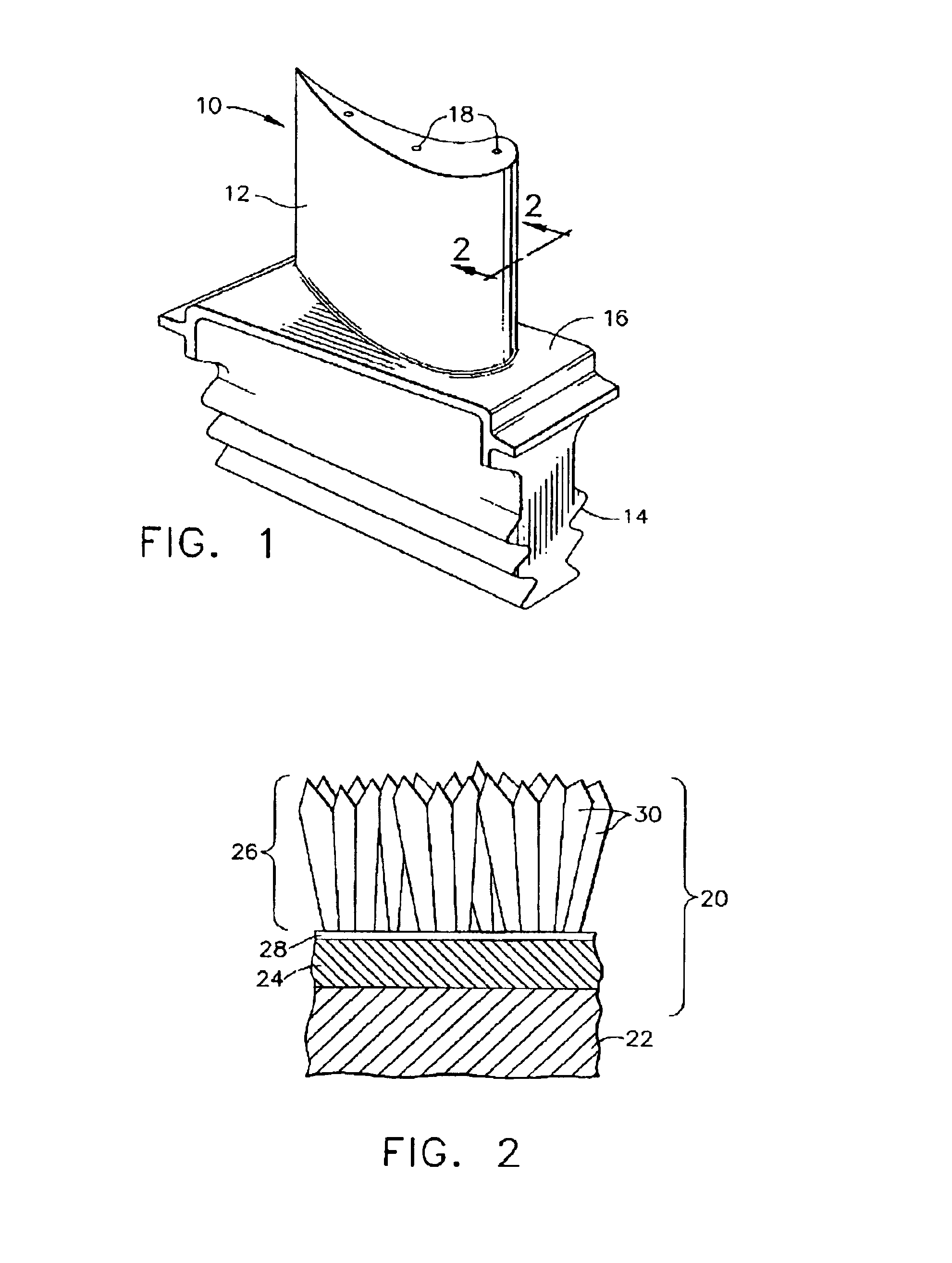Thermal barrier coating material
a technology of thermal barrier and coating material, which is applied in the field of coatings, can solve the problems of insufficient mechanical properties of such alloys, inhomogeneity and porosity of tbc, and the increase of high temperature durability of components within the hot gas path of engines, so as to promote thermal cycle fatigue life, reduce thermal conductivity, and thin coating
- Summary
- Abstract
- Description
- Claims
- Application Information
AI Technical Summary
Benefits of technology
Problems solved by technology
Method used
Image
Examples
Embodiment Construction
[0018]The present invention is generally applicable to components subjected to high temperatures, and particularly to components such as the high and low pressure turbine nozzles and blades, shrouds, combustor liners and augmentor hardware of gas turbine engines. An example of a high pressure turbine blade 10 is shown in FIG. 1. The blade 10 generally includes an airfoil 12 against which hot combustion gases are directed during operation of the gas turbine engine, and whose surface is therefore subjected to hot combustion gases as well as attack by oxidation, corrosion and erosion. The airfoil 12 is protected from its hostile operating environment by a thermal barrier coating (TBC) system schematically depicted in FIG. 2. The airfoil 12 is anchored to a turbine disk (not shown) with a dovetail 14 formed on a root section 16 of the blade 10. Cooling passages 18 are present in the airfoil 12 through which bleed air is forced to transfer heat from the blade 10. While the advantages of ...
PUM
| Property | Measurement | Unit |
|---|---|---|
| thickness | aaaaa | aaaaa |
| thicknesses | aaaaa | aaaaa |
| weight percent | aaaaa | aaaaa |
Abstract
Description
Claims
Application Information
 Login to View More
Login to View More - R&D
- Intellectual Property
- Life Sciences
- Materials
- Tech Scout
- Unparalleled Data Quality
- Higher Quality Content
- 60% Fewer Hallucinations
Browse by: Latest US Patents, China's latest patents, Technical Efficacy Thesaurus, Application Domain, Technology Topic, Popular Technical Reports.
© 2025 PatSnap. All rights reserved.Legal|Privacy policy|Modern Slavery Act Transparency Statement|Sitemap|About US| Contact US: help@patsnap.com


